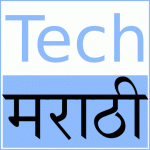(As the web upgrades to web-2.0, it becomes a difficult challenge to figure out the value of companies that are serving this market. Since most web-2.0 companies are in an early stage of their evolution, they can’t be measured on the basis of the revenues they are earning. Instead, one needs to guess at the future earnings based on measuring the thing that they’ve currently managed capture – i.e. the number and demographics of visitors, and the amount of attention they are paying to the site. Pune-based entrepreneur Vibhushan Waghmare, who has co-founded a marketing analytics startup, MQuotient, gives us an overview of this space, points out some problems, and wonders if there is an opportunity for some entrepreneur to step in and provide solutions.)
Introduction
A good product or service will always attract appreciation and success, but what will make it stand out from crowd and fetch the premium is knowledge of exactly how good it is from the rest. Qualitative strategy decisions are important to set the direction, but real numbers and insights from these numbers are required to actually know how fast/slow is one moving in that direction and how far it is from the target.
This applies to online internet businesses as well. As against the established brick-and-mortar businesses which are driven primarily by monetary profitability, evolving online businesses have been searching for the parameters to judge and measure the success or failure of the business.
A few days before the Dot Com bust (of early 2000s) happened, we had seen how internet companies’ valuation shot off the roof based on parameters like eyeballs they generated – and hypothetically – could be monetized. We had ExciteAtHome paying $780 million for BlueMountain.com, an online greeting cards company with 11 million monthly visitors and negligible revenues (which was sold to American Greetings after 2 years for just $35 million!). Back then, page-hits on the servers was what each site measured and investors bought into.
Today we are into web2.0 world, and parameters for measuring success of online business have also evolved to 2.0 version. Before the Lehman Brothers folded up their shop, we had valuations of these socionets soaring to astronomical levels – all based on the unique users they can generate. Page-hits have given way to page-views per unique user, and now we talk about more evolved and derived parameters like unique users visiting the site and time spent by each unique user on the website. With the ghosts of Dot Com bust not yet laid to rest, investors and entrepreneurs are much more cautious and are becoming scientific in tracking and measuring the internet traffic. Still every now and then, we keep getting news about socionets with their latest 2.0 apps being chased by good money because of their platform of involved users, although all that they do there is poke each other and take up a challenge of some random quiz. We all know the problems giants like Google are facing when it comes to monetizing a socionet like Orkut.com. Economists have predicted 8 of the last 5 economic meltdowns, and I don’t want to sound like one. I just want to point out to you the issues faced by online businesses today.
User Panel based traffic estimation
I was reminded of these measurement arguments when last weekend I attended an interesting talk organized by Pune OpenCoffee Club. We had owner of a reputed online gaming portal talking about the kind of traffic his games attract. He used comScore extensively to compare himself in the online gaming world and stated that getting into the top 5 of the comScore list of online gaming sites worldwide is the target he has set for himself. (I don’t know whether the list was of page views or unique users these gaming sites are generating). Definitely a great target to chase!
While comScore does provide an elaborate analysis of the website traffic and is considered a standard worldwide, before we set our business targets based on it, we need to understand the methodology used for this tracking. comScore has a panel of around 2 million internet users worldwide (16,000 in India) and these users install monitoring software from comScore on their computers. This monitoring software is used to determine which websites are being visited by these users, and how much time they are spending on each site. comScore then uses extensive statistical methods to extrapolate these numbers to the behaviour of all the users (not just comScore’s user panel). More details on methodology are here). They have elaborate analysis like time spent by each user, IP tracking, repeating users, incoming and outgoing traffic and many more such details.
But what needs to be noticed is the fact that comScore excludes traffic from cyber-cafes and users under age 15. For India, I am sure that is a sizable mass of internet users. And when it comes to activities like online gaming, I am afraid, absolute numbers shown by comScore might be drastically away from the reality. Cyber cafe still remains an important point of access for Indians and excluding this traffic can result in misleading conclusions. Internet is being taught in schools and at least in cities, school kids are using internet extensively for both studies and entertainment purposes. In such situation, excluding users under age 15 might not always provide the best traffic numbers, especially for activity like online gaming.
The other good bet in terms of tracking online traffic is Alexa.com. Alexa again, is a panel research based on the information gathered through a browser toolbar that their panel of users download and install in their browser. However in over more than a decade that I have spent on internet, I have not seen a single browser with Alexa toolbar. Apart from the high-end users of internet, I wonder if an average internet user would actually go to www.alexa.com and download and install their toolbar.
There are some other tracking and measurement services available, but mostly it has been Alexa and comScore who are quoted for such purposes.
One can argue that both comScore and Alexa work based on a random sample and hence same error in reporting would appear across traffic measurement for all sites. Given this, Alexa and comScore can be reliably used to compare two internet destinations or to detect any deviation from normal trend. However for absolute numbers, I guess there is lot more needed to be done.
For developed countries where most of the traffic originates from home, school or offices and very less from cyber cafes, these numbers might work, but for India with its huge cyber cafe traffic, I guess a more extensive tracking system is required. Cyber cafes continue to be important point of access, often the only access point in tier II and III cities. I have seen young school kids flocking these cyber cafes which serve more as gaming parlours; parents creating matrimony profiles of their children with the help of assistant (generally the owner) at the cyber cafe; and young college students playing pranks on their friends through Orkut and also getting their first experience to mature content over internet. comScore is missing this traffic by excluding cyber cafes.
Although this traffic might not be very huge in terms of absolute numbers, general observation is that these new users of internet (who learn how to use internet in cyber cafes) are more likely to click on ads as online behaviour has not matured to differentiate an online advertisement from a genuine article. I once saw a school kid trying to fill up a life insurance form because the advertisement offered some lucky draw prize on filling the form (Of course he never completed the form for the lack of PAN number :-)). This audience would be of the least interest to all the online advertisers and brands since they hardly convert into any transaction; however these would be the guys who would most likely click on all those online advertisements and hence form important part of the online advertisement industry.
Is there an entrepreneurship opportunity here
I am sure that all hosting servers do have the exact numbers about traffic coming to them, however key is in profiling this traffic and consolidating and analysing this information into useful insights. Quite often websites who try to track and measure their traffic resort to putting javascripts on their pages for this purpose. This adds to page-weight and slows down the site, a significant problem in country like India where high-speed broadband is still a luxury. These efforts give reasonable tracking and measurement of traffic from server side alone. However to prove the worthiness of traffic generated by website, system needs to track the demographic details of this traffic. System should provide information about the age, education profile, income level and other details in which advertisers and investors would be interested. Of course proxy variables need to be used for this tracking along with all the principles of market research and with due care of privacy of the user. Also the system should be encompassing enough to take care of diversity in internet usage as we see in India and in developed western countries and also in non-English speaking countries.
Creating such a tracking and measurement system for India would need investment, and given the current level of online advertisement spends in the country it needs to be analyzed whether this investment is justified.
Do you guys see an entrepreneurship opportunity in this?
About the author – Vibhushan Waghmare
Vibhushan is a co-founder of MQuotient, a Pune-based startup that uses cutting-edge quantitative analytics and mathematical modeling to build software products for marketing analytics, and in general deliver solutions for enterprise marketing challenges. Before co-founding MQuotient, Vibhushan was managing the Search product at Yahoo! India. He is an MBA from IIM Ahmedabad and an Electrical Engineer from REC, Nagpur. He has also held positions with Amdocs & Cognizant Technology Solutions. Check out his blog, his linked-in page, or his twitter page for more about him.






![Reblog this post [with Zemanta]](http://img.zemanta.com/reblog_b.png?x-id=c1421b6f-4985-468e-900c-528f7874f33d)
 Ganesh Natarajan, CEO of
Ganesh Natarajan, CEO of